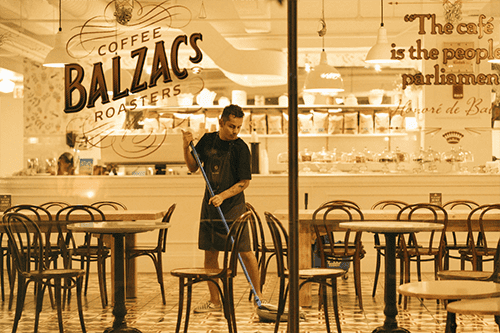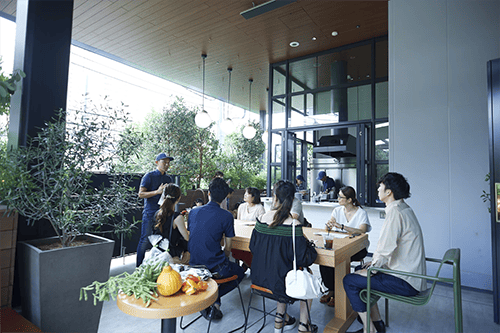15 Ways Automated Scheduling Benefits Modern Business
Tired of spending hours putting together work schedules for your team? Discover ...

Calculating and controlling restaurant labor costs is essential for the success of your business. If you’re not familiar with the key metrics that result in labor cost and labor cost percentage, it’s very difficult to get control of your bottom line.
In this article, we discuss some of the steps involved for calculating restaurant labor cost and then provide suggestions for controlling these numbers.

For restaurants, prime cost is the combination of two expenses:
Every restaurant is different — and you may find a prime cost that works better for you — but, as a general rule, prime cost should fall between 55 and 60 percent of weekly sales. Of that 55-60 percent, labor costs should make up 15-17 percent of weekly sales.
Now, we’ll delve a bit deeper into calculating restaurant labor costs so you can discover ways to improve your bottom line.staurant labor costs so you can discover ways to improve your bottom line.

The easiest way to calculate restaurant labor costs is to examine your numbers from a previous shift, day, week, or (better yet) full month of activity.
Armed with this data, you can then begin to estimate labor costs and control your employee schedule to keep expenses low (we’ll talk about this at the end of the article).
Here’s how to calculate restaurant labor cost in four easy steps:
To help you understand this process, we’ve set up a hypothetical restaurant in the next section.
We’ll walk through the numbers and equations for this hypothetical restaurant so you can learn how to apply the calculations to your own business.r this hypothetical restaurant so you can learn how to apply the calculations to your own business.
Beginning with step one — choose a time period — it’s often easier to start small and work up from there. So instead of trying to analyze a whole week of numbers, we’ll use two hours during the lunch shift on our busiest day.
In step two — determine the number of guests — we go back through our point of sale data to find the number of guests who ate during the lunch shift on our busiest day.
In our hypothetical restaurant example, we’ll use 50 guests in two hours.
Now that we know the number of guests, we can move to step three — determine the minimum number of staff needed to serve those 50 guests.

Keep in mind that you may have been short-staffed during the time in question, so set the number of staff needed at your ideal level. That way, you can use these numbers to project your labor costs into the future.
For our hypothetical restaurant, we’ll use the following metrics:
When we know how many team members we need, we can accurately determine labor cost for those two hours in step four.
In our hypothetical restaurant, hosts are paid $12/hour, servers are paid $10/hour, and cooks are paid $15/hour.
With that information, we can multiply each employee by the hours they work (two) and the wage they are paid.
Here’s what that looks like for this example:
2 hosts x (2 hours worked x $12/hour) = $48
5 servers x (2 hours worked x $10/hour) = $100
3 cooks x (2 hours worked x $15/hour) = $90
Now all we have to do is add those numbers together to find our total restaurant labor cost.
Restaurant Labor Cost = The Sum Of All Wages Paid During Two Hours
Restaurant Labor Cost = $48 + $100 + $90
Restaurant Labor Cost = $238
So $238 is the labor cost for our restaurant’s busiest lunch shift. But that is just a number that doesn’t really tell us anything other than what we spent on wages. To really get a handle on our spending, we now need to calculate labor cost percentage.

Using some of the data you’ve already collected, you can calculate restaurant labor cost percentage in three easy steps:
Again, we’ll walk through our hypothetical restaurant’s numbers as an example.
We’ll start calculating labor cost percentage at step one by determining the average check for the 50 guests during the two-hour lunch shift. For our hypothetical restaurant, we’ll set the average check at $25.
Moving on to step two, we can calculate total income by multiplying the average check by the number of guests that dined.
Total Income = Average Check x Number Of Guests
Total Income = $25 x 50
Total Income = $1250
That’s how much money our hypothetical restaurant brought in (on average) during the two-hour period in question.
Finally, in step three, we can use all this data to calculate our hypothetical restaurant labor cost percentage.
Here’s the equation:
Restaurant Labor Cost Percentage = Restaurant Labor Cost / Total Income
Restaurant Labor Cost Percentage = $238 / $1250
Restaurant Labor Cost Percentage = 0.19
We talked about prime cost (food, beverage, and labor cost combined) at the beginning of this article and how labor costs should be 15-17 percent of that number. The 0.19 (or 19 percent) we calculated above tells us that our labor costs are a bit high (greater than 17 percent).
Now that we know what our labor costs are, we can take steps to control them.

Once you’ve identified the values of your key metrics (prime cost, labor costs, and labor cost percentage), you can begin to adjust the way your business operates to increase profits.
Here are some of the best ways to do that.
All businesses are different. As such, the salary structure that another business uses may not work for your restaurant.
What’s more, the salary structure that another restaurant — even one in a similar niche — uses may not work for your restaurant.
To create an appropriate salary structure that works for your team and your business, you’re going to have to build something from the ground up.
If you’re thinking about changing your business’s salary structure, be sure to talk with your employees first. If you neglect this step and just spring a new arrangement on your team, you may set off a wave of high turnover that can cripple your restaurant.
Once you have an appropriate salary structure in place, review the details at least once a year to see how things are going. If something isn’t working — or could work better — don’t be afraid to make a change.
Another step you can take to manage restaurant labor costs for the better is to control attrition.
Attrition is the number of employees who leave your company over a specific period of time and is typically calculated as a percentage of the number of team members who left versus the total number of team members you started with.
Wrapped up in those numbers are all the attrition-related costs that can have a negative impact on your restaurant and your team, including such things as:
Some restaurants have found success controlling attrition by providing better growth opportunities for their existing employees, offering incentives and fringe benefits, implementing employee loyalty programs, and improving company culture.
What works for your business may be as unique as the employees who work there. Experiment with various solutions to help you control attrition. Keep what works and discard the rest.ttrition. Keep what works and discard the rest.
Another way you can work to control your restaurant labor costs is by cross-training your team to perform other jobs within your business.
Doing so can benefit your employees and your business by:
So, for example, instead of having one employee who only knows how to be a server and another employee who only knows how to be a host/hostess, through cross-training, you could have two employees who can do both jobs.
Providing opportunities to take on new responsibilities within your organization allows your team members to grow in their professional capabilities and helps prevent the stagnation that may lead them to look for better options in another company.
If you do choose to try cross-training employees within your restaurant, give them time to develop the necessary skills for one job before introducing them to another job.
Doing so will make it easier for them to develop a strong foundation and avoid the confusion that can come with taking on multiple jobs too quickly.

Maintaining control of your restaurant labor costs goes all the way back to the beginning and the hiring process you have in place.
Investing time, money, and effort into recruitment, the interview system, and the onboarding procedure can help you find a better fit for your team — rather than just someone to fill a spot in a hurry.
Hiring someone who fits nicely into your company culture and workflow may reduce the likelihood that that person will tire of working for your business and consider leaving.
Neglecting to hire a good fit can lead to more attrition and the additional expense of having to go through the hiring process sooner rather than later.
Another strategy that may be able to help you control restaurant labor costs is assembling a diverse team.
Diversity in the workplace — i.e., hiring people from different cultures, viewpoints, backgrounds, and personalities — can empower your team to broaden their horizons and set new goals for both themselves and your business.
That, in turn, may lead to a long list of benefits for your restaurant, including:
Even just one of these benefits can help your employees feel better about their jobs and motivate them to stick around longer.
When they feel less propensity to run to “greener pastures,” you’ll be better positioned to get control of your restaurant labor costs and keep them at a beneficial level.ned to get control of your restaurant labor costs and keep them at a beneficial level.
If you find yourself struggling to control your restaurant labor costs, consider thinking outside the box and adjusting other variables in your operation — such as menu pricing — so that you have more money to dedicate to “fielding” a good team.
Consider implementing a round of menu engineering to evaluate item pricing and placement with the ultimate goal of increasing profitability per guest.
The money you save by adjusting menu pricing can then be channeled into covering the costs of the team you’ve got, adding another employee or two to the roster, or funding a benefits program so that your employees are motivated to give their all when they’re on the job.
Examining other areas of your business, and cutting costs there when possible, may help you find the funds that allow you to gain control of your restaurant labor costs.
At its simplest, efficiency is the amount of effort and resources your team puts into the jobs you give them.
When you improve the efficiency with which everyone does their job, your team may be able to get more done during their hours at work.
And, with more getting done (more customers being served, more projects being completed, etc.), the costs associated with all business activities may go down to such an extent that you become aware of new ways to control labor costs across the board.
Using Toast for your POS needs is one great way to improve your team’s efficiency so you can focus on what you do best.

Monitoring overtime hours is another excellent way to get control of your restaurant labor costs and to help keep those costs as low as possible.
If left unmonitored, overtime hours can quickly become a massive drain on your budget and your bottom line.
It’s essential that you take steps to keep your employees’ overtime hours as low as possible so that those hours don’t run out of control. The best way to do this is with scheduling software.
Some of the more advanced workforce management apps (like Sling) give you the power to view total time worked in real time as you schedule.
If a shift you schedule causes an employee to stray into overtime territory, the app will notify you of the “danger” and give you suggestions to fix the issue so that you can stay as far away from overtime hours as possible.
Keeping your team organized may seem like a monumental task — especially if they (and you) are busy from the moment they clock in to the moment they clock out.
But, the benefits of organization and focus are well worth the effort and may result in improved control of your restaurant’s labor costs.
One of the best ways to keep your team on track throughout the day is with the help of task-management tools (like those included in the Sling app).
Such tools make it possible for you and your team to:
When your team is organized and focused, they may see improvements in efficiency, productivity, and even motivation — all of which can help you reduce the costs associated with getting things done in your restaurant.
In some cases, all your employees need is a little motivation.
With a bit of encouragement and inspiration, your team may perform their jobs better, which, in turn, can lead to lower labor costs per shift.
The nice thing about motivation is that there are many, many ways to get things going (and a lot of those ways are relatively inexpensive).
For help motivating your team, take a few minutes to read these helpful articles from the Sling blog:

The best way to manage and lower your labor costs is to use a suite of software tools like Sling.
Sling gives you incredible control over your schedule so you can quickly and easily create schedules one month, two months, even six months or more in advance.
Sling even lets you optimize labor costs by setting wages per employee or position so you can see how much each shift will cost you.
You can keep track of your labor budget and receive alerts when you’re about to exceed those numbers. This will help you save money and increase profits.
Sling is the go-to solution for all your scheduling and restaurant-labor-cost-management needs.
For more free resources to help you manage your business better, organize and schedule your team, and track and calculate labor costs, visit GetSling.com today.
See Here For Last Updated Dates: Link
This content is for informational purposes and is not intended as legal, tax, HR, or any other professional advice. Please contact an attorney or other professional for specific advice.
In a perfect world, your labor costs would hover around 15-17% of total revenue. That would leave plenty of funds to cover other expenses, save for a rainy day, or build your bottom line.
In the real world, though, 15-17% may be too low to cover all your labor needs. It’s a good goal to shoot for, but it might not be effective long term.
Instead, shoot for a labor cost percentage of between 25% and 30%. If you can come in below 25%, great! If not, 30% is still a very respectable number that should give you enough flexibility to run your business effectively and efficiently.
It’s essential to monitor labor costs because they can be such a large chunk of the money coming into your business.
If you don’t control labor costs, those expenses can quickly spiral out of control and affect your business’s ability to operate effectively. The reason for this is because actual labor costs involve more than just your employees’ hourly rates.
Actual labor costs include many, if not all, of the following additional expenses:
Monitoring and controlling all of the variables that go into your total labor cost numbers will help you keep expenses as low as possible while still being able to schedule a full staff of employees on every shift.
Yes! In fact, using scheduling software to monitor labor costs is one of the best ways to keep an eye on your overall expenses.
Some advanced scheduling tools (like Sling) allow you to set a labor budget for each shift and then notify you if the employees you’ve chosen cause your labor costs to approach or exceed that expense threshold.
In many cases, you can even see what each shift will cost as you schedule (i.e., in real time) so you don’t have to go back and forth trying to find the right combination of team members for each shift.
The same scheduling software you use to control labor costs can also help you track that expense long term.
Workforce management apps (like Sling) come with tools that help you monitor labor costs from start to finish, including:
You can schedule your team, track time worked, manage tasks, control who works where and when, and generate labor reports for any period of time you choose — all from a single app.
Optimizing labor costs doesn’t necessarily mean paying your employees less. In fact, there are less impactful — yet still effective — ways to streamline the labor process so that expenses go down.
Here are some suggestions for optimizing labor costs without cutting wages:
Sling gives you unprecedented access to — and control over — the variables that affect labor costs, including:
We built Sling with workforce management in mind. As such, scheduling, time tracking, and labor cost control are the foundation of the app.
Schedule faster, communicate better, get things done.